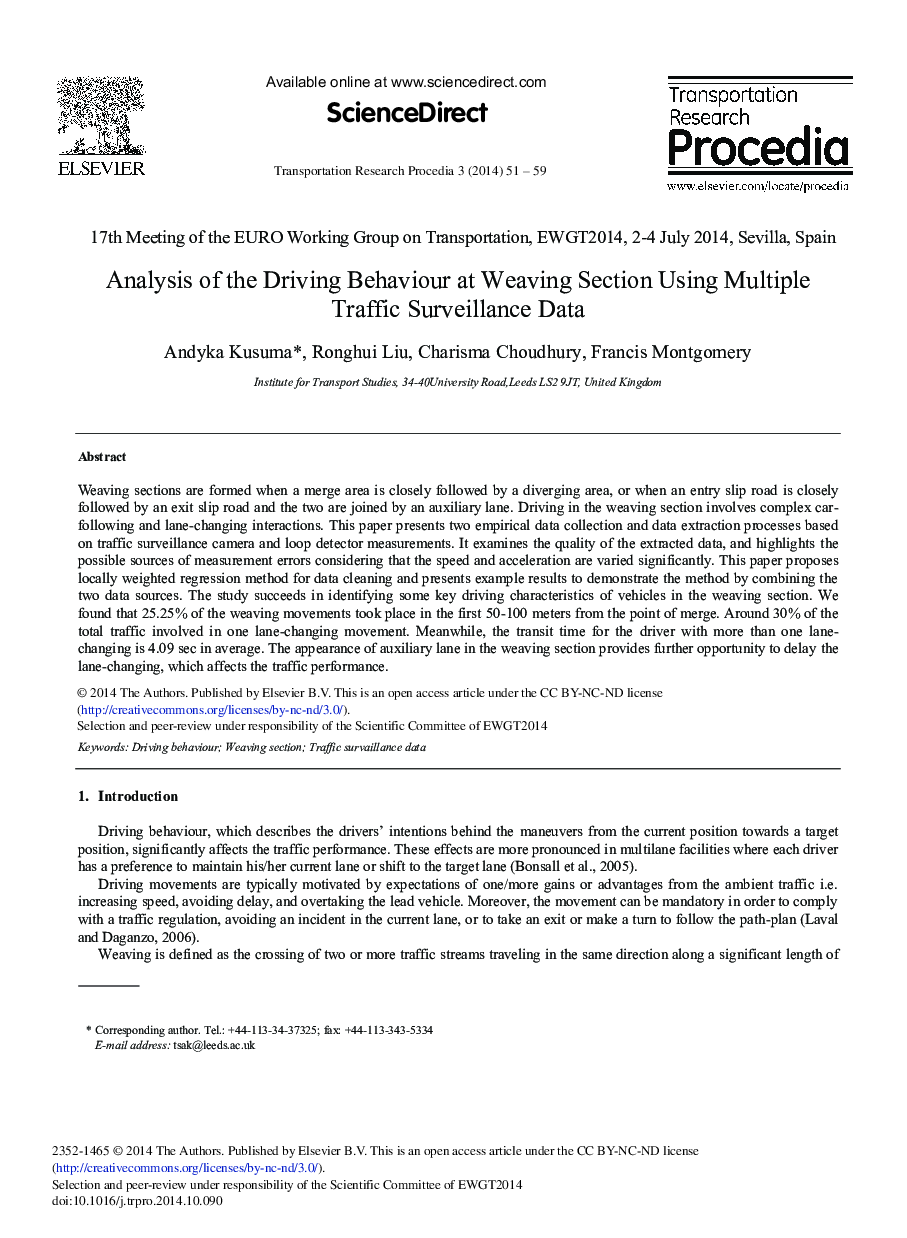| Article ID | Journal | Published Year | Pages | File Type |
|---|---|---|---|---|
| 1106382 | Transportation Research Procedia | 2014 | 9 Pages |
Weaving sections are formed when a merge area is closely followed by a diverging area, or when an entry slip road is closely followed by an exit slip road and the two are joined by an auxiliary lane. Driving in the weaving section involves complex car-following and lane-changing interactions. This paper presents two empirical data collection and data extraction processes based on traffic surveillance camera and loop detector measurements. It examines the quality of the extracted data, and highlights the possible sources of measurement errors considering that the speed and acceleration are varied significantly. This paper proposes locally weighted regression method for data cleaning and presents example results to demonstrate the method by combining the two data sources. The study succeeds in identifying some key driving characteristics of vehicles in the weaving section. We found that 25.25% of the weaving movements took place in the first 50-100 meters from the point of merge. Around 30% of the total traffic involved in one lane-changing movement. Meanwhile, the transit time for the driver with more than one lane-changing is 4.09 sec in average. The appearance of auxiliary lane in the weaving section provides further opportunity to delay the lane-changing, which affects the traffic performance.
